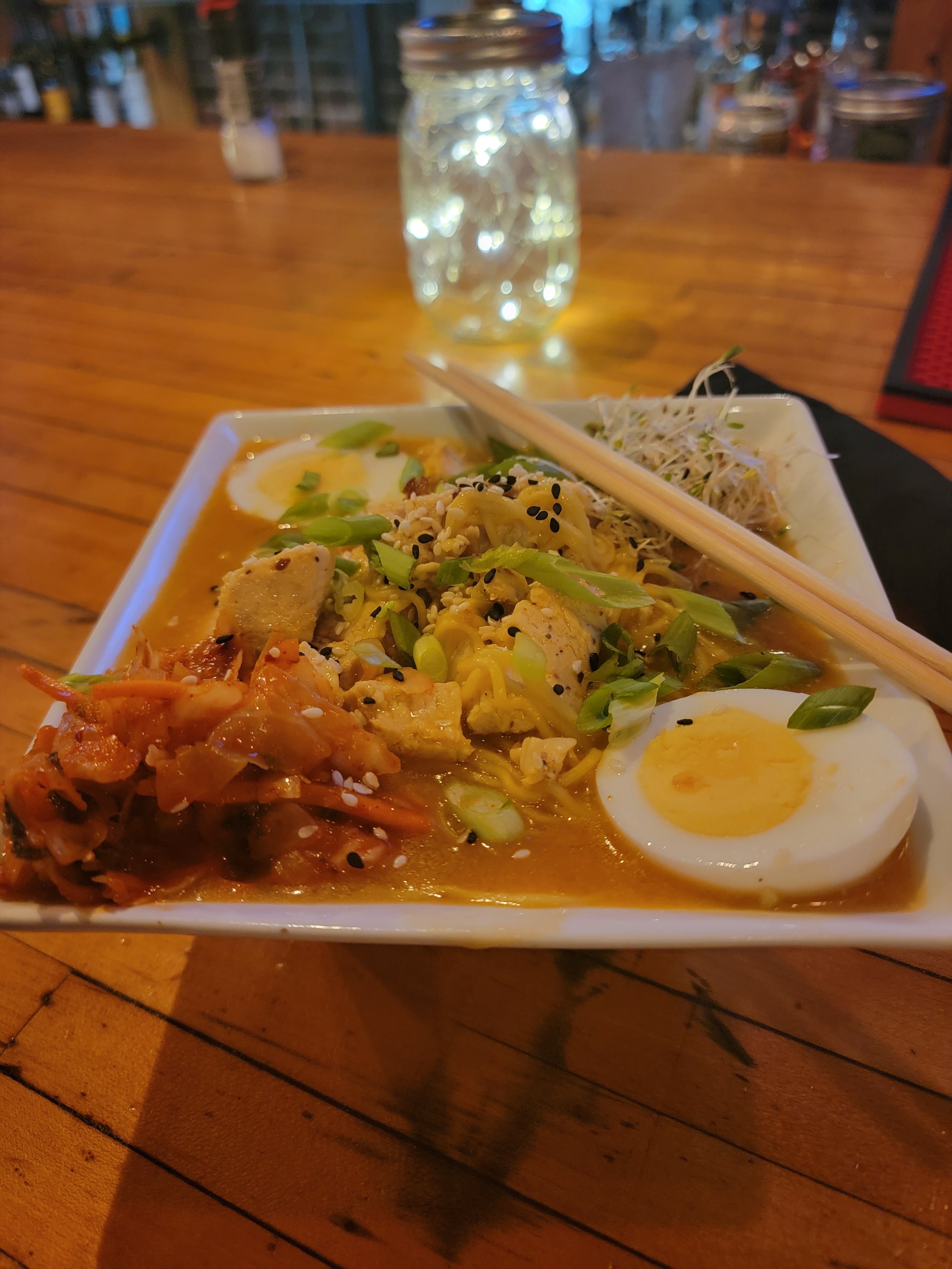How to make ramen eggs
Introduction
Ramen eggs, also known as ajitsuke tamago in Japanese, have become an essential component of the beloved ramen bowl. With their rich umami flavor and silky texture, these delectable eggs add a tantalizing dimension to the already comforting and soul-satisfying experience of savoring a bowl of steaming hot ramen. To truly appreciate the art of making ramen eggs, it is crucial to delve into their intriguing history and understand the unique characteristics that make them so highly regarded in Japanese cuisine.
A Brief History of Ramen Eggs
Ramen eggs have a deep-rooted history that can be traced back to Japan's culinary traditions. While the exact origins are unknown, it is believed that they first emerged as a popular topping in Tokyo during the mid-20th century when ramen shops began to flourish across the city.
Originally, these eggs were invented as a way to utilize surplus stock by marinating them in soy sauce and other flavorful ingredients. Over time, ramen eggs gained recognition for their ability to complement and enhance the overall taste profile of ramen bowls.
Their subtle sweetness from mirin (a type of rice wine) combined with the savory notes from soy sauce created a harmonious balance that elevated the complexity of flavors within each mouthful. The delicate yet distinct flavor profile made them an instant hit among ramen enthusiasts, leading to their widespread inclusion in almost every bowl served across Japan.
The Unique Characteristics and Flavors of Ramen Eggs
What sets ramen eggs apart from regular boiled or fried eggs is their luscious custard-like yolk and slightly firm but tender egg white. Achieving this perfect balance requires precise cooking techniques and expert attention to detail. When cooked just right, the yolks turn into velvety golden orbs that ooze with creaminess when pierced with a chopstick or spoon, creating a delightful contrast to the surrounding broth and noodles.
The marinade plays a crucial role in imparting the distinct flavors that make ramen eggs so irresistible. Soy sauce adds umami depth, while mirin and sake contribute sweetness and complexity.
The combination of these ingredients infuses the eggs with an irresistible aroma that is both comforting and enticing. The longer the eggs are marinated, the more pronounced the flavors become, allowing them to soak up all the delicious nuances of the marinade.
As you embark on your journey to perfecting ramen eggs, remember that each step is crucial in achieving that ultimate balance between texture and flavor. By understanding their history and appreciating their unique characteristics, we can truly grasp why these little culinary gems have become an inseparable part of Japan's iconic noodle dish - ramen.
Understanding Ramen Eggs
Definition and basic composition of a ramen egg
Ramen eggs, also known as Ajitsuke Tamago in Japanese, are a delightful and essential addition to any bowl of ramen. These eggs are soft-boiled, resulting in a custard-like yolk encased in a tender white.
The term "Ajitsuke" translates to "flavored," highlighting the egg's marinated nature. While the exterior may seem ordinary, it is the transformative marinade that imparts rich umami flavors and an irresistible taste that elevates any ramen dish.
The composition of a ramen egg is simple yet crucial to achieve the desired texture and flavor. It starts with selecting fresh eggs from reliable sources, ensuring their quality and freshness.
The key is to strike the perfect balance between having a firm white while maintaining a creamy yolk center. This delicate equilibrium can be achieved through precise boiling times and temperature control.
Overview of the traditional marinating process for ramen eggs
The traditional marinating process for ramen eggs involves immersing the soft-boiled eggs in a mixture of soy sauce, mirin (a sweet rice wine), sake (Japanese rice wine), sugar, and water. Each ingredient plays an essential role in enhancing different aspects of flavor, texture, and preservation. Soy sauce acts as the primary seasoning agent, imparting saltiness and umami notes to the eggs.
Mirin adds sweetness and balances out the flavors by providing subtle acidity. Sake contributes depth with its unique fermented aroma while aiding in preservation due to its alcohol content.
Sugar provides mild sweetness that complements other flavors without overpowering them. To begin marinating, first cool down the soft-boiled eggs by transferring them into an ice water bath after cooking to stop further cooking processes.
Once cooled completely, gently crack the eggshells without peeling them completely to allow the marinade to penetrate. Next, submerge the cracked eggs in the marinade mixture, ensuring they are fully enveloped.
The marinating time can vary depending on personal preference, but typically ranges from 4 to 24 hours. This process infuses the eggs with a beautiful medley of flavors and transforms them into a delectable companion for your ramen dish.
Understanding the definition and composition of a ramen egg, as well as the traditional marinating process, lays a solid foundation for creating these mouthwatering delicacies. In the next sections, we will delve into more intricate details of how to cook ramen eggs, including boiling techniques and variations that allow you to customize this delightful addition according to your taste preferences and culinary adventures.
Ingredients and Equipment
The Perfect Combination of Flavors
To create the best ramen eggs worthy of gracing the bowls of a Michelin-starred restaurant, you must gather the finest ingredients. Fresh eggs are an absolute necessity; their quality directly impacts the final result. Opt for organic, free-range eggs for superior taste and texture.
Alongside the eggs, gather soy sauce, mirin, sake, sugar, and water to form the foundation of your delectable marinade. Each ingredient plays a crucial role in enhancing flavor harmony, combining sweet and savory notes that will complement your ramen perfectly.
Essential Tools in Culinary Symphony
In order to orchestrate this culinary symphony known as ramen egg preparation, several vital tools are required. The process begins with a pot filled with water that will bring your eggs to a gentle boil.
Ensure you have a stove at your disposal to provide consistent heat control throughout cooking. As for handling the eggs during marination, a bowl is indispensable; opt for one that can comfortably accommodate all your eggs while allowing space for the marinade mixture.
Once your boiled eggs are ready to be transformed into delightful ramen companions, prepare either plastic wrap or ziplock bags as vessels for marination. These options provide convenience and ensure optimal contact between the eggs and marinade while preventing any leakage or messiness.
You now possess both an understanding of what ingredients summon unparalleled flavors in ramen eggs as well as a comprehensive selection of tools necessary for this culinary masterpiece. With these foundational elements in place, we can delve into the intricacies of transforming humble eggs into savory delights that will elevate any bowl of ramen to new heights of gastronomic bliss.
Boiling the Eggs: Perfectly Cooked with Runny Yolk Consistency
Mastering the Art of Boiling Eggs
When it comes to making ramen eggs, achieving the perfect soft-boiled consistency is crucial. It ensures a lusciously runny yolk that harmonizes with the other elements of your ramen dish. Begin by placing fresh eggs in a pot and covering them with enough cold water to submerge them fully.
Gradually heat the pot over medium-high heat until the water reaches a rolling boil. Once boiling, reduce the heat slightly to maintain a gentle boil.
Tips for Consistent Results Every Time
To create consistent results when boiling your eggs, it's essential to keep track of time accurately. For a runny yolk, allow the eggs to cook undisturbed for precisely six minutes from when they reach a full boil.
For a firmer yolk, adjust the cooking time accordingly—around seven minutes for medium-boiled or eight minutes for slightly firmer yolks. It's also vital to ensure even cooking by gently stirring the water occasionally during boiling.
This helps evenly distribute heat and guarantees consistent results throughout each egg. Remember that factors such as egg size and desired consistency may require slight adjustments in cooking times, so feel free to experiment and find what works best for you.
Preparing the Marinade: Enhancing Flavor and Texture
The Perfect Combination of Ingredients
To create an irresistibly flavorful marinade for your ramen eggs, precise proportions are key. Start by combining equal parts soy sauce and mirin in a bowl—about 1/4 cup of each is typically sufficient for six eggs.
Then add one tablespoon of sake, which adds depth and complexity to the marinade's flavor profile. To balance out these savory components, incorporate one tablespoon of sugar, which adds a touch of sweetness.
Unveiling the Roles of Each Ingredient
The soy sauce in the marinade imparts a rich umami flavor that perfectly complements the delicate nature of ramen eggs. Mirin, a sweet Japanese rice wine, adds a subtle sweetness and depth to the marinade.
Sake not only enhances flavor but also helps tenderize the eggs during the marinating process. Sugar acts as a balancing agent by harmonizing all the flavors and adding a hint of sweetness.
By skillfully combining these ingredients, you create an exceptional marinade that elevates the taste and texture of your ramen eggs to new heights. The balance achieved reflects traditional Japanese craftsmanship and ensures an unforgettable culinary experience.
Marinating the Boiled Eggs: Achieving Optimal Flavor Intensity
Cool Down and Crack
After boiling your eggs to perfection, it's crucial to cool them down swiftly to prevent overcooking. Transfer them directly from boiling water into a bowl filled with ice water. Allow them to sit for around five minutes until they are completely cooled through.
To achieve those beautiful marbling patterns on your ramen eggs, gently tap or roll each egg on a hard surface without peeling them completely. The goal is to create fine cracks all over while maintaining intact shells.
The Art of Marinating
Once you have cracked your eggs delicately, carefully place them in a sealable plastic bag or container filled with the prepared marinade mixture. Ensure that each egg is submerged fully so that it can absorb all the flavors evenly.
For subtle flavor enhancement, marinate for at least two hours in the refrigerator. For more intense umami notes and deeper coloration, extend marinating time up to 24 hours.
Remember that longer marination results in stronger flavors, so adjust the duration based on your desired taste profile. The marinating process allows the eggs to soak up all the delicious flavors of the marinade, transforming them into delectable additions to your best ramen dishes.
Variations and Enhancements
Adding Depth with Additional Ingredients such as Garlic or Ginger
When it comes to making ramen eggs, there is always room for experimentation and personalization. To add depth and complexity to your ramen eggs, consider incorporating aromatic ingredients like garlic or ginger into the marinade.
Adding a touch of minced garlic brings a subtle yet tantalizing flavor that complements the rich umami taste of ramen eggs. Start by finely mincing one or two cloves of garlic and adding them to the marinade mixture before placing the cracked eggs in it.
Allow the eggs to soak in this flavorful concoction for a slightly longer time than usual. The result will be lightly fragranced eggs that offer an extra layer of taste.
Another option is to introduce the warm, earthy notes of ginger into your ramen egg marinade. Grate fresh ginger root or use pre-packaged grated ginger and mix it into the marinade along with the other ingredients.
The natural spiciness and warmth of ginger beautifully blend with soy sauce, mirin, sake, sugar, and water, infusing your ramen eggs with an invigorating kick. This variation pairs particularly well with rich pork-based broths, as it balances out their robustness while adding a delightful zing.
Experimenting with Different Types of Soy Sauce or Vinegar
While traditional soy sauce works wonders for making delicious ramen eggs, don't limit yourself! To create unique flavor profiles, you can explore different types of soy sauce or even experiment with vinegar variations. Consider trying tamari soy sauce as an alternative to standard soy sauce; it offers a more intense flavor due to its higher concentration of fermented soybeans compared to regular soy sauce made from a blend of wheat and soybeans.
Tamari lends a deeper umami profile to your ramen eggs, enriching them with a savory and satisfying taste. Alternatively, you can venture into the realm of flavored soy sauces.
These varieties often include additional ingredients like mushrooms or bonito flakes to create a more nuanced taste. Choose a flavored soy sauce that complements your desired flavor profile.
For instance, mushroom-infused soy sauce adds a delightful earthiness to the eggs, enhancing their overall umami experience. For those who enjoy a touch of tanginess, experimenting with different types of vinegar can yield interesting results.
Rice vinegar offers a mild and slightly sweet acidity that harmonizes well with the other ingredients while adding brightness to your ramen eggs. Black vinegar, on the other hand, boasts a more robust and complex flavor profile that brings depth and richness to the marinade.
By exploring these variations and enhancements in both ingredients and techniques, you can elevate your ramen egg game and create unique combinations that perfectly suit your palate. Whether it's infusing aromatic notes with garlic or ginger or experimenting with different soy sauces or vinegars, these small adjustments will add an extra layer of complexity to your ramen eggs, transforming them into irresistible morsels ready to take any bowl of ramen to new heights.
Serving Suggestions
Pairing Ramen Eggs with various
Ramen eggs, with their rich umami flavor and creamy yolk, are a versatile addition to many dishes. Here are some exciting serving suggestions that will take your culinary experience to new heights: 1. Ramen: The most obvious and delightful pairing for ramen eggs is, of course, ramen itself.
Placed gently atop a steaming bowl of piping hot noodles, the runny yolk oozes out, adding an indulgent richness to every spoonful. Whether you prefer traditional tonkotsu or spicy miso broth, the addition of ramen eggs elevates the entire dish to a whole new level of deliciousness.
2. Rice bowls: Another fantastic way to enjoy ramen eggs is by placing them over a bed of fluffy Japanese rice. The combination of creamy yolk mixing with the grains creates an explosion of flavors and textures in each bite.
You can further enhance this simple yet satisfying meal by adding sautéed vegetables, pickles, or even thinly sliced grilled meat. 3. Salads: Incorporating ramen eggs into salads can completely transform your greens into a hearty and satisfying meal.
The velvety texture and savory taste of the eggs complement fresh leafy vegetables perfectly. Experiment with different dressings like sesame ginger or miso vinaigrette for unique flavor profiles that will leave your taste buds longing for more.
Conclusion
Learning how to make ramen eggs opens up a world of culinary possibilities that go beyond just being part of a bowl of noodles. These delectable treats can be enjoyed in various ways – from enhancing the flavors in traditional Japanese dishes such as ramen and rice bowls to bringing new life to salads or other creative recipes you may invent along the way.
By following this detailed guide on making ramen eggs, you can achieve the perfect consistency and flavor every time. So, why not venture into your kitchen and embark on a delicious culinary adventure?
Delight your taste buds and impress your friends and family with the best ramen eggs you've ever made. Unleash your creativity and explore new horizons in the realm of gastronomy by incorporating these savory gems into your meals.





























































